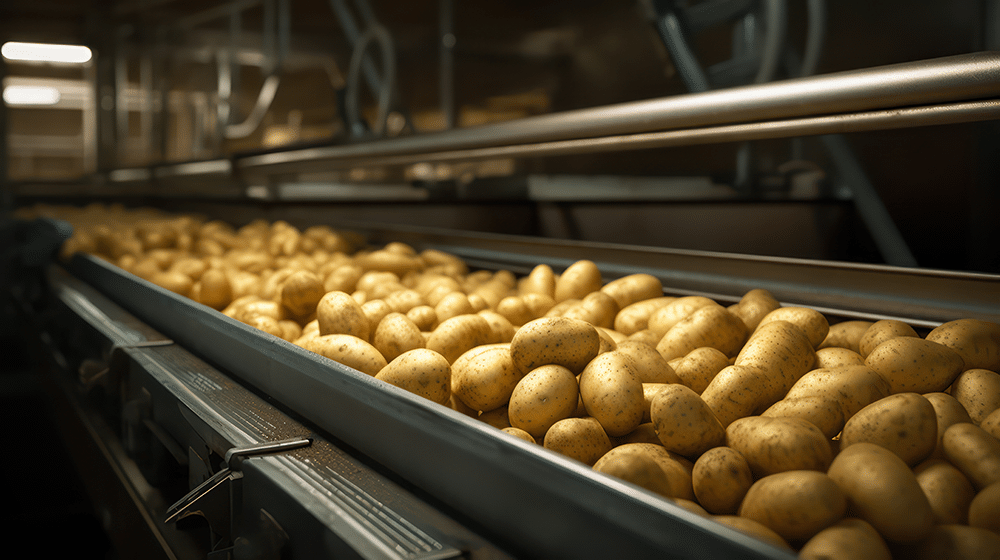Interview with Avebe
C-Level conversations



Orchestrating the Perfect Day
According to author Douglas Adams, ‘it’s a mistake to think you can solve any major problem just with potatoes’ – which is why Avebe, a Dutch company producing potato starch and protein, is turning to technology. To learn more about the company’s ongoing digital transformation, we sat down with Mark Tettelaar, former Manager of Operations at Avebe.
You have a long history in the food and beverage industry, having worked at Heineken and the Bel Group before joining Avebe seven years ago. How has technology changed the industry – and your job – over the course of your career?
Considering that when I first started with Heineken I didn’t even have a computer, the simple answer would be ‘a lot’! But even then, Heineken was at the forefront of adopting the latest technologies, believing that doing so would result in more advantages than disadvantages.
I also think that the food and beverage industry in general has always been an early adopter of new technologies. Because the processes we use are simple, at least compared to say the oil or chemicals industries, integrating new technologies is much easier. The food and beverage industry is also a highly regulated sector, meaning there’s no room for variation between plants or products. How do you minimize the risk for such variations? With automation, which is why the industry, in general, has always been ahead of the automation curve. I say in general because, surprisingly, Avebe was a notable exception.
No one-size-fits-all solution
I imagine your first task was to rectify this situation.
Absolutely, but automation doesn’t happen overnight. It is particularly challenging at Avebe as we have six factories located in the Netherlands, Germany and Sweden, each of which has its own unique function – meaning there is no one-size-fits-all solution. Instead, each plant tends to be automated in its own way and by using different systems, whether that be Honeywell, Foxboro, Siemens or a combination thereof.
One of the first things I did at Avebe was to set up a strategy for moving us from six factories to a factory 4.0. This meant looking at the data and seeing how we can better connect all the operations happening across all our sites. The funny thing is that we had a lot of data already gathered, it’s just nothing was being done with it! But at least we had the data, which meant we could move forward with our factory 4.0 strategy. With this data in hand, we are now exploring it in databases and modeling it using dynamic dashboards. Because not every line is a priority, we start with the most important processes. It’s a big job, but we’re making progress.
Can you provide an example of what this progress looks like?
A good example can be seen in our shift to preventative maintenance. When I started, I would say Avebe was about 80% corrective maintenance, 20% preventive – which is an awful ratio as this means you are very unpredictable, always putting out fires and never able to implement structural plans.
Bend the habits
Through automation and the use of emerging technologies, we have flipped this ratio in favor of preventive maintenance.
Part of this shift involved giving our operators devices, such as iPads, that they can use in their everyday processes. This means that when they do a tour of a process or a machine, they can take pictures, add comments, etc., directly into their personal device, which is then automatically added to our SAP system, ensuring that everyone is aware of the issue and can take immediate action when needed. We also implemented a digitized work permit process to ensure that all tasks are completed on time.
What challenges have you faced on your digitalization journey?
The biggest challenge is that we must convince an old workforce to adapt to new technologies. As they say, you can’t teach an old dog a new trick, and considering that the average age of our operators is 55, training our people is an ongoing process.
One thing we have found to work is to focus less on the ‘how to use’ and more on showing the benefits of using a new process or technology. If they see the advantages firsthand, and especially if it makes their job easier, they will be more likely to accept – if not embrace – the change.
Towards the Factory of the Future
Speaking of having an older workforce, how worried are you about securing the talent you need for tomorrow?
We have big worries as there is a huge shortage of people with the technical skills we need. A challenge for us in the Netherlands is to position Avebe as an attractive employer – which is easier said than done as we’re a relatively small fish swimming in a rather large pond of bigger, perhaps ‘sexier’, fish.
As we’re talking about tomorrow, where do you see Avebe – particularly as to its digital transformation – in the coming years?
I think for us, the main goal of our digitalization is to get us to a level of automation that allows us to eliminate the risk of variations. As I mentioned earlier, variations are the bane of the highly regulated food and beverage industry, and Avebe is no exception. To achieve this level of operational excellence, in the coming years we will likely focus on integrating the best sensors into our processes so that we can gather even more detailed data. At first this data will enable our operators to intervene at the first sign of a deviation, but ultimately, we want this intervention to also be automated.
If we can do this, then I believe Avebe, as a Factory 4.0 company, will be fit for the future.